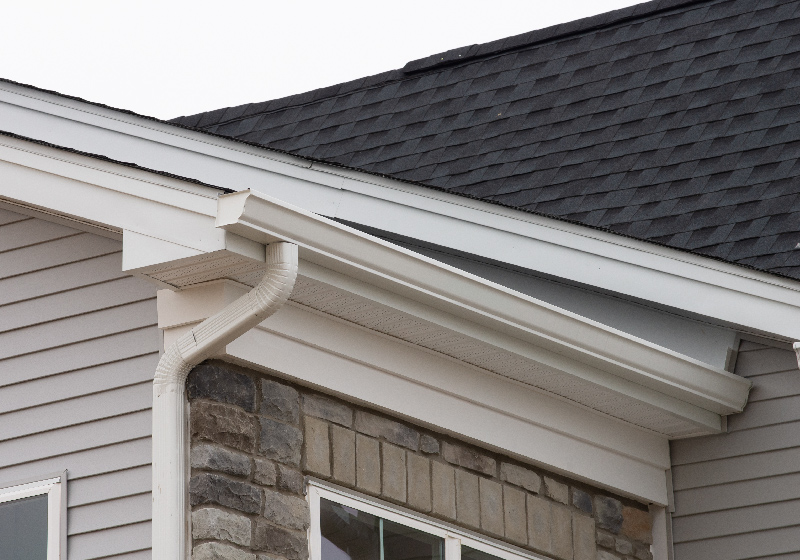Commercial properties pose a unique challenge for inspectors due to their increased scale and the expanded complexity of many of their internal systems. However, the top concerns for commercial buildings and the everyday family home remains the same: water. Water and moisture have the potential to absolutely wreak havoc on a building’s structural stability, causing wood rot, corrosion, unsightly staining, and even fostering mold growth.
While these ever-present dangers are certainly on the minds of property inspectors, builders, and engineers, the “Four D’s” principle has been developed to help ensure safety for tenants. To get a better idea of what property inspectors look for in a well-maintained commercial building, let’s discuss how the “Four D’s” combat rain, snow, and all forms of moisture intrusion.
Walls and Roofing Strive to Deflect
The first D, and every building’s first defense against water damage refers to its ability to deflect water away from the structure. Roofs and roof overhangs are incredibly important for this process, as is the building’s cladding, a weather-resistant exterior wall layer that is commonly made of metal and provides additional insulation.
Common points of water intrusion have been identified over the years, including wall and roof intersections, windows, doors, and balcony or walkway intersections. Balconies are particularly known to have leaking issues due to natural building movement, compression, and shrinkage which can compromise the structure’s original weather-resistant designs. For example, due to the many dangers that a lack of diligence can cause and the state’s high number of balconies, Florida’s balcony inspection laws require these features to be regularly assessed in commercial properties to ensure safety standards.
Since the vast majority of a building’s leaks come from a relatively small number of entry points, proactive building managers can get ahead of water damage by focusing their maintenance efforts on some of these locations.
Pathways Open for Drainage
Drainage is another major influencing factor that needs consistent evaluation to ensure a property can stand up to weather conditions. We’ve previously discussed how landscaping issues can redirect water run-off towards buildings and lead to gutting foundation issues, and how poor drainage and pooling water can ruin parking lots. Unsurprisingly, buildings also need an effective way to drain water or its materials will rapidly degrade.
Water-resistant barriers (commonly referred to as WRBs) are a key element to building drainage along with an air gap which separates the WRB from the structure’s cladding. This design allows any water that made it past the cladding to still drain from the building safely and quickly. When it comes to landscaping, a “negative grade” is any area where the ground slopes down toward the building, which undermines the rest of the building’s drainage systems.
Air Gaps Allow Drying
A building’s ability to dry depends on climate, the depth and distance of air gaps between cladding and the WRB, and whether the building’s materials absorb and hold moisture. A building’s ventilation and ability to allow evaporation can sometimes be an issue in areas where exterior and interior temperatures are vastly different such as in the southern United States where moist outdoor air migrates indoors.
Brick veneer walls can have issues with drying, for example, since bricks are porous and allow easier passage for moisture to the WRB. This is why brick veneer walls need open weep holes around its base and beneath windows to allow more room for water to drain and evaporate. Some property managers who are unaware of why weep holes are so helpful to a building’s water defense design have been known to cover up these areas either unknowingly or for aesthetic purposes.
Regular site evaluation by commercial inspectors or property managers that are knowledgeable about construction and building design is vital for ensuring drying functions are effective and unaltered.
Materials Matter for Durability
While all building materials face their share of strain and pressure throughout their lifespan, exterior materials that have to stand up rain, snow, sleet, wind, and sun need to be of an especially high quality. Wooden materials can rot, metal can corrode and rust, and deterioration from the exterior can create more access points for mold development and pest access.
Property owners and managers who want to focus on extending the lifespan of their building should be vigilant for damages, be aware of the unique pressure their climate puts on their property, and (of course) use high quality building materials in the first place! Water intrusion, even minor leaks that go unaddressed, can lead to many issues and can compromise the health of tenants and guests, so remember to be proactive and include consistent property inspections in your maintenance plans.
For more on commercial real estate trends and commercial maintenance topics, you’re in the right place!



